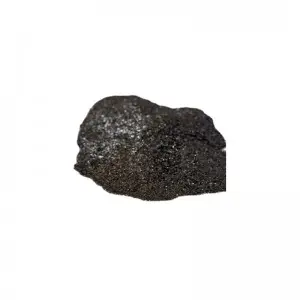Spherical graphite has become a foundational anode material for modern lithium-ion batteries used in electric vehicles, energy-storage systems, and consumer electronics. As global demand for higher energy density and longer cycle life accelerates, spherical graphite offers superior performance compared to traditional flake graphite. For B2B buyers, understanding its properties and supply considerations is critical to ensuring stable and competitive battery production.
What Makes Spherical Graphite Essential in Advanced Energy Systems
Spherical graphite is produced by milling and shaping natural flake graphite into uniform spherical particles. This optimized morphology significantly improves packing density, electrical conductivity, and electrochemical performance. Its smooth surface reduces lithium-ion diffusion resistance, enhances charge efficiency, and increases the active material loading in battery cells.
In a rapidly growing EV and energy-storage market, spherical graphite enables manufacturers to achieve higher capacity per cell while maintaining operational safety and cycle durability.
Key Performance Advantages of Spherical Graphite
-
High tap density that increases energy-storage capacity
-
Excellent conductivity and low internal resistance for faster charge/discharge performance
These benefits make it a preferred anode material for applications requiring reliable, high-efficiency power delivery.
Production Process and Material Characteristics
Producing battery-grade spherical graphite involves precision rounding, classification, coating, and purification. Natural flake graphite is first shaped into spheres, then separated by size to ensure uniformity. High-purity grades require chemical or high-temperature purification to remove metal impurities that may cause side reactions during charging.
Coated spherical graphite (CSPG) enhances cycle life by forming a stable carbon layer, which improves first-cycle efficiency and reduces SEI formation. Particle size distribution, surface area, bulk density, and impurity levels all determine how the material performs in lithium-ion cells.
Low surface area helps minimize irreversible capacity loss, while controlled particle size ensures stable lithium-ion diffusion pathways and balanced electrode packing.
Applications Across EV, Energy Storage, and Consumer Electronics
Spherical graphite is widely applied as the primary anode material in high-performance lithium-ion batteries. EV manufacturers rely on it to support long driving range, fast charging, and thermal stability. Energy-storage system (ESS) providers use spherical graphite for long cycle life and low heat generation.
In consumer electronics, spherical graphite ensures stable capacity retention for smartphones, laptops, tablets, and wearables. Industrial tools, backup power units, and medical devices also benefit from its consistent electrochemical stability and power delivery.
As future anode technologies evolve—such as silicon-carbon composites—spherical graphite remains a key structural component and performance enhancer.
Material Specifications and Technical Indicators
For B2B procurement, spherical graphite is evaluated using key performance metrics such as tap density, D50/D90 distribution, moisture content, impurity levels, and specific surface area. High tap density increases the amount of active material in each cell, improving total energy output.
Coated spherical graphite offers additional advantages for fast-charging or high-cycle applications, with coating uniformity greatly influencing efficiency and battery life. EV-grade materials typically require ≥99.95% purity, while other applications may accommodate different specifications.
Types of Spherical Graphite Products
Uncoated Spherical Graphite
Used in mid-range cells or blended anode formulations where cost optimization is important.
Coated Spherical Graphite (CSPG)
Essential for EV batteries and ESS products requiring high cycle stability and long service life.
High-Tap-Density Spherical Graphite
Designed for maximum energy density to improve cell capacity without major design changes.
Custom Particle Size Grades
Tailored to cylindrical, prismatic, and pouch-cell manufacturing requirements.
Supply Chain Considerations for B2B Buyers
As global electrification accelerates, ensuring stable access to high-quality spherical graphite has become a strategic priority. Consistent particle morphology, purity, and surface treatment are essential for minimizing production variation and improving final battery yield.
Sustainability is another critical factor. Leading producers are shifting toward environmentally friendly purification processes that reduce chemical waste and energy consumption. Regional regulatory requirements—especially in Europe and North America—also influence procurement strategies.
Long-term contracts, technical data transparency, and supplier capability assessments are increasingly important to maintain competitive production capacity.
Conclusion
Spherical graphite plays a vital role in powering the global lithium-ion battery industry, delivering the performance required for EVs, ESS systems, and high-end electronics. Its superior density, conductivity, and stability make it indispensable for manufacturers seeking higher energy efficiency and longer cycle life. For B2B buyers, evaluating material properties, production technology, and supplier reliability is essential for securing a long-term competitive advantage in the rapidly expanding energy-technology market.
FAQ
1. What is the main benefit of spherical graphite in lithium-ion batteries?
Its spherical shape improves packing density, conductivity, and overall energy efficiency.
2. Why is coated spherical graphite preferred for EV applications?
The carbon coating enhances cycle life, stability, and first-cycle efficiency.
3. What purity level is required for high-end battery production?
EV-grade spherical graphite typically requires ≥99.95% purity.
4. Can spherical graphite be customized for different battery formats?
Yes. Particle size, tap density, and coating thickness can be tailored to specific cell designs.
Post time: Nov-20-2025
